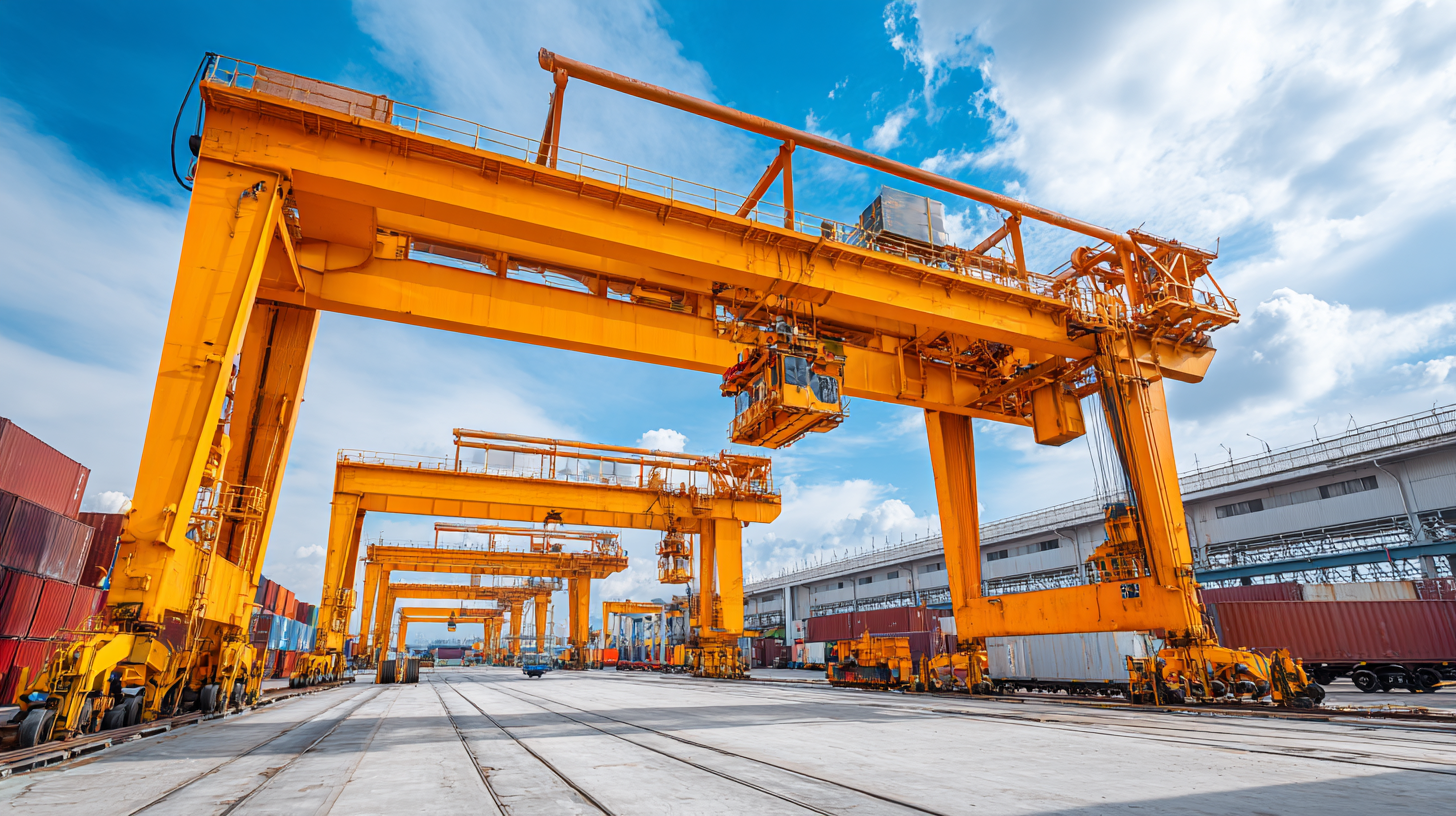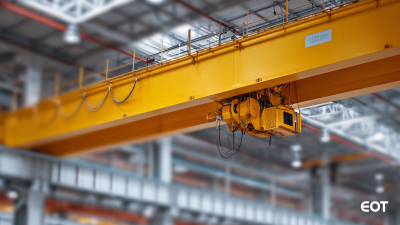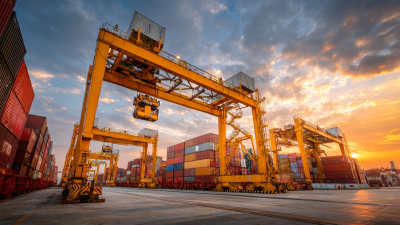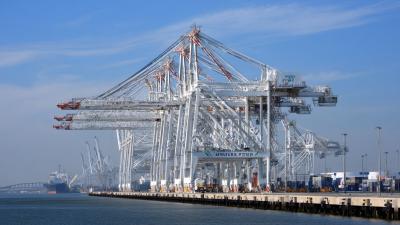Inquiry
Form loading...
-
Phone
-
Wechat

-
Whatsapp

In the dynamic landscape of industrial operations, the selection of the appropriate Eot Crane is paramount to optimizing productivity and safety. In 2025, it is projected that the global overhead crane market will reach approximately $5.95 billion, driven by advancements in manufacturing technologies and increased demand for material handling solutions across various sectors. Choosing the right Eot Crane not only enhances operational efficiency but also plays a critical role in reducing workplace accidents, which can cost businesses millions annually.

Modern Eot Cranes come equipped with sophisticated controls and automation features, which are essential as industries evolve towards smart manufacturing practices. A comprehensive understanding of your specific operational needs—including load capacities, span requirements, and the type of materials being handled—will guide you in making an informed investment. According to recent industry reports, 72% of organizations that carefully assess their lifting requirements experience significant improvements in workflow efficiency and cost savings. This guide aims to provide essential insights and considerations for selecting the ideal Eot Crane to meet your industrial needs.
When selecting the right Electric Overhead Traveling (EOT) crane for your industrial needs, understanding the various types and their technical specifications is crucial. EOT cranes are available in different configurations such as single girder and double girder, which determine their lifting capacities and operational suitability. Double girder cranes, for instance, offer enhanced stability and greater load handling capabilities, making them ideal for heavy-duty applications.

Tips for Choosing the Right EOT Crane:
1. Evaluate Load Requirements: Assess the maximum weight you will be lifting. This will dictate whether a single or double girder crane is more appropriate.
2. Consider the Work Environment: Factors such as ceiling height, space constraints, and the type of materials being handled can influence the design of the crane you select.
3. Look for Advanced Features: Modern EOT cranes come equipped with smart technologies such as automation and sensors. Investing in these features can enhance operational efficiency and safety.
By taking these considerations into account, you can make an informed decision that aligns with your industrial goals and enhances your operational workflow.
When selecting an EOT (Electric Overhead Traveling) crane for industrial applications, several key factors come into play. First and foremost, understanding the specific lifting capacity required is crucial. This involves assessing the weight of the materials to be moved and any future needs that may arise as operations expand. An appropriate crane must be able to handle not only the current workload but also potential increases in load.
Another important factor to consider is the span and height of the lift. The dimensions of your workspace will dictate the configuration of the EOT crane. Evaluating the available headroom and the distance the crane must cover ensures that it operates efficiently without compromising safety. Additionally, consider the type of materials being handled as this can influence the design features you may need, such as specialized hooks or trolleys. Maintenance and available service support are also essential; selecting a crane that offers easy access for routine maintenance can help reduce downtime and extend the operational lifespan of the equipment.
| Key Factors | Description | Importance Level |
|---|---|---|
| Load Capacity | The maximum weight the crane can lift safely. | High |
| Span Length | The distance between the rails on which the crane operates. | Medium |
| Lifting Height | The maximum height to which the crane can lift a load. | High |
| Environment | The conditions where the crane will be used (indoor/outdoor). | High |
| Power Source | The kind of energy that powers the crane (electric/gas). | Medium |
| Control System | The method of operating the crane (manual/remote). | High |
| Budget | The total cost available for purchasing the crane. | High |
| Safety Features | Built-in systems to ensure safe operation. | High |
When selecting the right electric overhead traveling (EOT) crane for industrial applications, evaluating load capacity and performance requirements is paramount. Load capacity is a critical factor because it directly influences the crane's ability to safely lift and transport materials. Industries must assess their heaviest loads and consider not only the expected maximum weight but also occasional overload scenarios. This ensures that the crane operates within safe limits and prolongs its service life.
Performance requirements encompass factors like lifting speed, travel distance, and frequency of use. Different tasks may demand specific lifting speeds to enhance productivity without compromising safety. Furthermore, understanding the frequency of operation—whether the crane will be used intermittently or continuously—helps determine the appropriate motor strength and duty cycle. By aligning these performance criteria with operational needs, businesses can select an EOT crane that maximizes efficiency while ensuring compliance with safety standards.

When selecting an EOT (Electric Overhead Traveling) crane for industrial applications, assessing space and installation constraints is critical. Facilities often face limitations such as ceiling heights, structural integrity, and available floor space, all of which can influence crane choice. For instance, a high-ceilinged workshop might afford a higher lifting capacity, while a smaller or older facility may necessitate a compact design. According to industry data, 80% of crane accidents stem from improper installation or inadequate space assessments, underscoring the importance of accommodating these factors during the decision-making process.
Tips for a successful installation include conducting a thorough site analysis to identify potential obstructions and ensuring the building can support the crane's load and requirements. Collaborating with installation experts can also yield valuable insights tailored to your space. Additionally, manufacturers often offer customized solutions; leveraging this option can help optimize both functionality and safety within confined environments.
The ongoing Phase-II work by Rail Vikas Nigam Limited at Howrah serves as a prime example of the need for detailed planning in crane implementation, highlighting the necessity for precise assessments to avoid costly overruns and ensure operational efficiency.
When selecting an EOT crane for industrial applications, focusing on maintenance and safety features is crucial to ensure optimal operation. Smart EOT cranes are revolutionizing the way these machines are utilized in various sectors by integrating advanced technologies. Features like sensors and programmable logic controllers (PLCs) help monitor the crane's performance and condition in real-time, facilitating proactive maintenance and minimizing downtime. By incorporating automation and artificial intelligence, operators can not only enhance safety but also improve operational efficiency, significantly reducing the likelihood of accidents.
Additionally, regular maintenance protocols aligned with the smart features of EOT cranes can ensure their longevity and reliability. For instance, recent installations, such as the significant 175-ton crane delivered to a generator facility, highlight the importance of tailored solutions that meet the specific demands of heavy industrial environments. Such cranes are equipped with safety features, including overload protection and emergency stop systems, which safeguard both the equipment and personnel involved in lifting operations. Ultimately, prioritizing these features can lead to a safer and more productive work environment.






